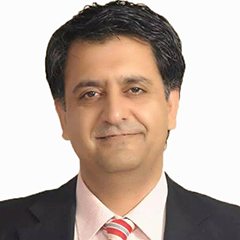
The rot of violence and extremism that started in the Deobandis had three dimensions. First and foremost, its aim was to counter the expansionist designs of the Shiites in Pakistan who acted as mere extensions of the Iranian “revolution”. This was essentially harbingered by the Tehrik-e-Nifaze Fiqa Jafria. Secondly, the increasing proximity that the Deobandis enjoyed with the State was first initiated by Prime Minister Zulfikar Ali Bhutto in 1974, and later led by General Zia-ul-Haq.
Bhutto and Zia had one thing in common: countering Afghanistan for its incessant conspiracies to disintegrate a post-1971 Pakistan via Pashtoon Zalmay and a ragtag of Baloch separatists. Its third dimension was based on the first two; Islamise Pakistan according to their terms and conditions (read sect) and do whatever it takes. Violence became just one tactic in the strategy.
Thinking Deobandis usually term this rot as ‘tyranny of history’ that started from the mid-1970s. But the fact is these thinking and eloquently speaking Deobandis preferred looking the other way each time a violent act led to Shia casualties. It was thought as unjust that the main rivals of the Deobandis ie Shiites demonstrated nonviolence. They did not, and equaled wherever and whenever they could. But they ran out of the space by the early 1990s, as Pakistan remained in the Western geostrategic camp during that period of time that saw Iran as the archrival. Hence, any Iranian influence, religious or political, had to be gagged and maimed on the home front.
With Shiite funding and resources choked, Brelvis busy in their religio-cultural practices, Ahle Hadith much fewer in numbers and in their infancy, Pakistan became a recruiting ground for Deobandis for the next two decades (1990-2010). Their proximity and collaboration with the State started in 1974 and flourished rapidly, and by the mid-1990s it started to get out of the control of the State. Earlier, the Pakistani State tried and mostly succeeded in keeping them under tight control, but by the mid-1990s, the Deobandis had grown their own connections with private donors and State backers in the Gulf. Exactly at that point, the Gulf nations basked in the blessings of capitalism, progressed as normal modern societies and prospered, while experimenting with sectarian-driven religion in Pakistan and Afghanistan. Both these countries became the testing labs for the religious ‘scientists’ who created their own lifelines that completely eroded the States’ influence and control on them.
Within the principled framework of democracy, there is nothing wrong with the religious enterprise. The challenge is to make sure the enterprise recognises and respects the State
A classic case is the State’s failure of a five-year-long Madrassa Reforms Project (2002-2007) that ambitiously aimed registering all Pakistani madaris. Of the overall allocated $57.59 million, the project only used $4.17 million, and reached out to only 3.3 percent of the overall expected size of the beneficiaries. This “resistance” was led by a joint forum of all Madrassa Education Boards, Ittehad Tanzimate Madarise Deenia (ITMD). Furthermore, ITMD was politically dominated by the Deobandi Wafaq al Madaris al Arabia (WMA) that had resources, political clout, access and organizational effectiveness that dwarfed the other four Wafaqs ie private education boards that regulate the sectarian madaris in Pakistan.
As of 2017, the WMA independently operates 18,948 madaris in Pakistan. It has 127,054 teachers who are providing Deobandi influenced education to 2,185,444 students. They do this with almost no support from the State. Hence, it became a Deobandi show of strength that mocked nearly every effort to regularise them via official paradigms.
Within the principled framework of democracy, religious enterprise should be allowed. The challenge is to make sure the enterprise recognises and respects the laws of the State.
This confidence, isn’t without reason. Numbers and resourcefulness aside, a stronger perception emanates from the fear of a bludgeon of violence that is associated with the Deobandi sect. Both the State and the Deobandis know each other inside out, but whenever it comes to having the last laugh Deobandis score 1 and State 0.
Deobandis started to grow their own wings when Molana Masood Alvi established Jamiat al Mujahideen. This jihadist outfit was reportedly established in Multan where the Deobandi Wafaq is headquartered. The tributaries with local impact had already existed, but this became the gateway for local, regional and global influence and influenced Pakistan today.
The writer is a social entrepreneur and a student of Pakistan’s social and political challenges. Twitter: @mkw72
Published in Daily Times, September 11th 2017.
